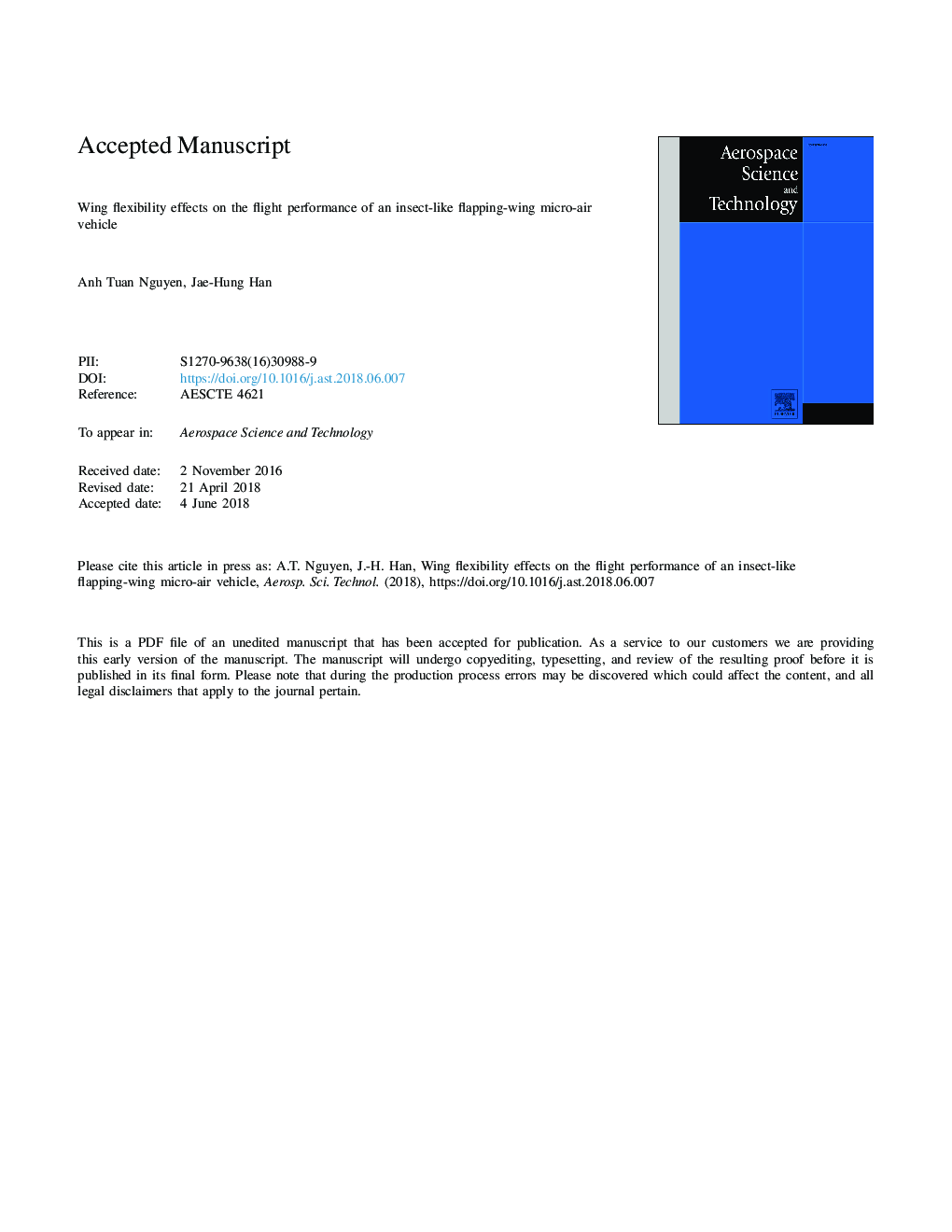| Article ID | Journal | Published Year | Pages | File Type |
|---|---|---|---|---|
| 8057409 | Aerospace Science and Technology | 2018 | 47 Pages |
Abstract
This study explores the effects of wing flexibility on several characteristics of flight, in this case the trim conditions, power requirements and dynamic stability of an insect-like flapping-wing micro-air vehicle (FWMAV) based on the hawkmoth Manduca sexta. The wing structure is analyzed by the finite-element method. A potential-based aerodynamic model which encompasses the unsteady panel method and the extended unsteady vortex-lattice method is employed to compute the aerodynamic forces. The motions of the FWMAV are obtained using a flexible multibody dynamics program coupled with the potential-based aerodynamic model. The results of this study show that the trim conditions of insect-like flexible and rigid FWMAVs may differ significantly from each other. When the flight speed is less than 3.0 m/s, using flexible wings is favorable, as they help the FWMAV reduce the power requirement and stabilize the lateral dynamics. However, at 3.0 m/s, these advantages are almost unnoticeable, while at 4.0 m/s, the flexible insect-like FWMAV requires even more mechanical power than its rigid counterpart.
Related Topics
Physical Sciences and Engineering
Engineering
Aerospace Engineering
Authors
Anh Tuan Nguyen, Jae-Hung Han,
